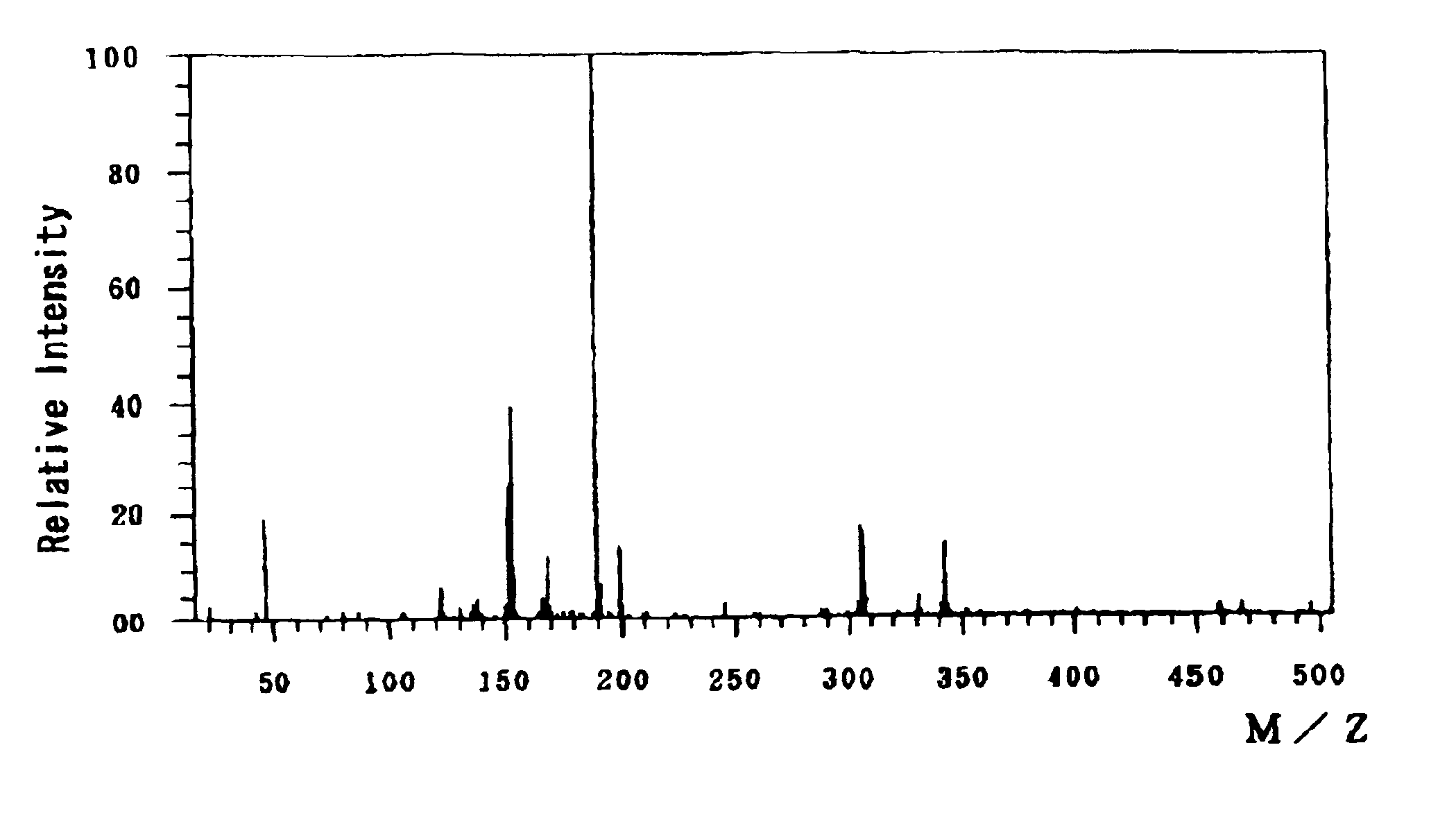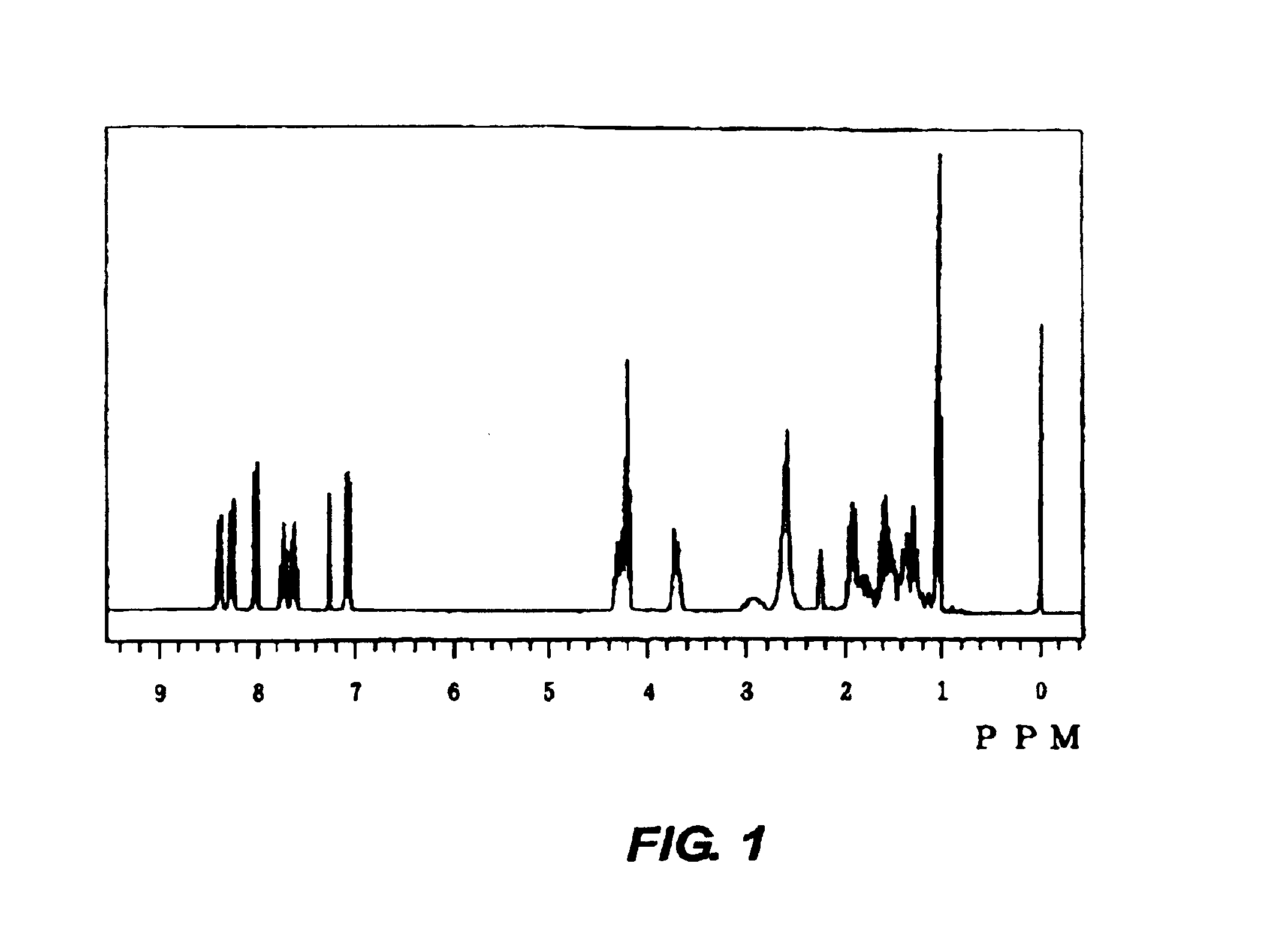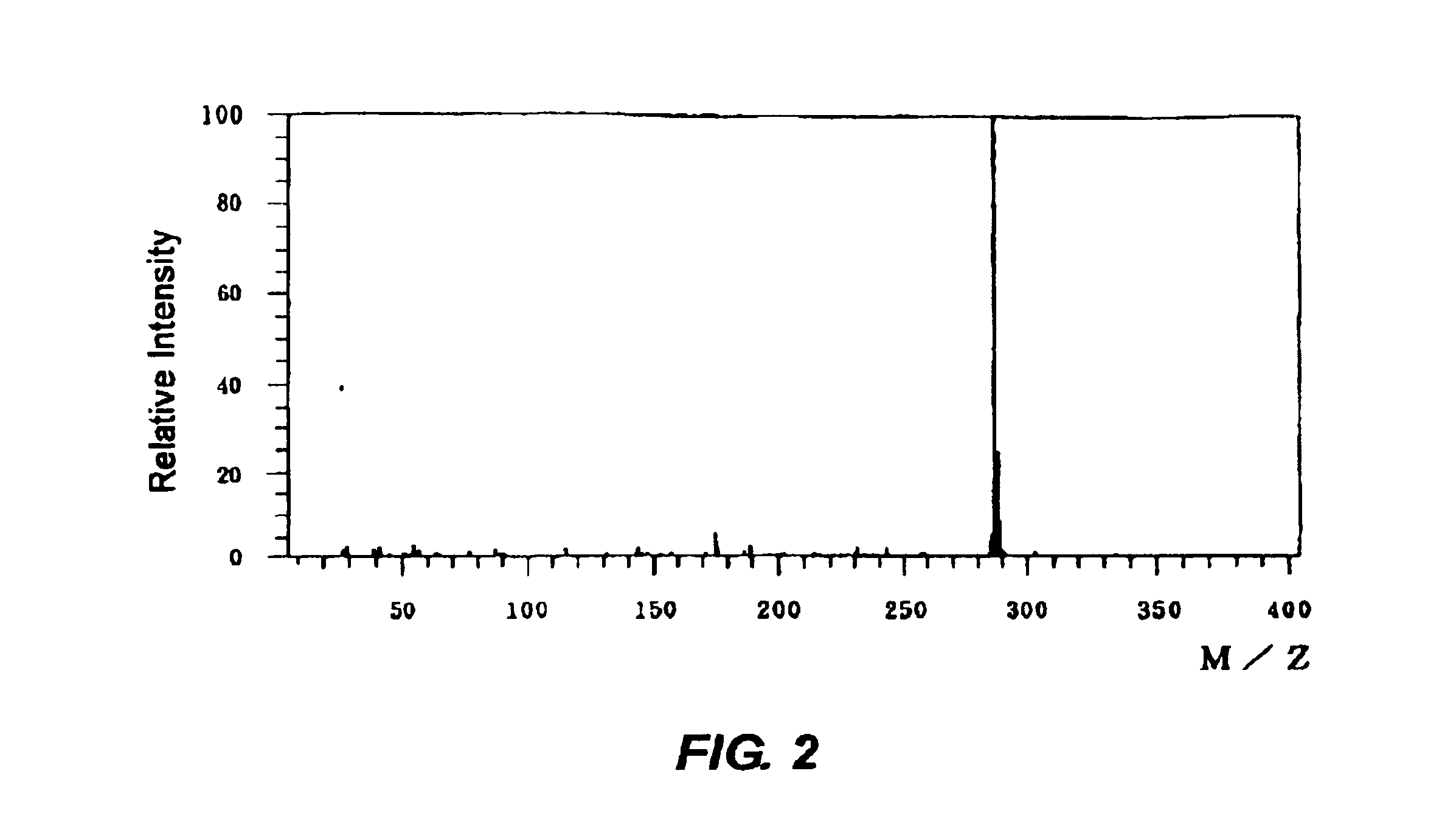Acid generator, sulfonic acid, sulfonic acid derivatives and radiation-sensitive resin composition
a technology of sulfonic acid derivatives and resin compositions, applied in the field of acid generators, can solve the problems of high mask dependency, insufficient resolution performance as a photoresist, and difficult microfabrication with a line width of a quarter micron order using near ultraviolet rays
- Summary
- Abstract
- Description
- Claims
- Application Information
AI Technical Summary
Benefits of technology
Problems solved by technology
Method used
Image
Examples
synthesis example 1
[0393]An autoclave was charged with 108.5 g of dicyclopentadiene and 322.4 g of 1-bromo-1,1,2,2-tetrafluoro-3-butene. A solution of 0.3 g of 4-methoxyphenol dissolved in 5 ml of toluene was added to the autoclave as a polymerization inhibitor and the mixture was stirred for 5 hours at 170° C. The reaction product was purified by distillation under reduced pressure at 85° C. and 25 mmHg to obtain 326 g of 1-bromo-1,1,2,2-tetrafluoro-2-(norborn-5-en-2-yl)ethane as a clear liquid (hereinafter referred to as “compound (1-a)”).
[0394]Next, a solution of 62 g of the compound (1-a) dissolved in 1 liter of ethyl acetate was added to a 2 liter eggplant flask. After the addition of 12 g of alumina containing 5% rhodium, the mixture was stirred vigorously for 3 hours under a hydrogen atmosphere. Then, the reaction solution was filtrated under reduced pressure through a glass filter covered with celite. The filtrate was concentrated under reduced pressure and the concentrate was purified by dist...
synthesis example 2
[0410]A 2 liter eggplant flask was charged with a solution of 20 g of triphenylsulfonium chloride dissolved in 500 ml of water. A 500 ml aqueous solution containing 20 g of the compound (1-d) was added by dripping at room temperature and the mixture was stirred for 30 minutes. The reaction solution was extracted with ethyl acetate and the organic layer was washed twice using water. 16 g of triphenylsulfonium 1,1,2,2-tetrafluoro-2-(norbornan-2-yl)ethane sulfonate was obtained as a clear high viscous oil by concentrating the solution by distillation under reduced pressure. The results of 1H-NMR analysis for this compound are shown in FIG. 4. The results of mass analysis for the cation moiety and anion moiety are shown in FIGS. 5 and 6 respectively.
[0411]This compound is referred to as “acid generator (A-2)”.
synthesis example 3
[0412]A 2 liter eggplant flask was charged with a solution of 20 g of diphenyliodonium chloride dissolved in 1 liter of water. A 500 ml aqueous solution containing 20 g of the compound (1-c) was added by dripping at room temperature and the mixture was stirred for 15 minutes. The deposited crystals were filtered through a glass filter, sufficiently washed with water, and dried under reduced pressure to obtain 12 g of diphenyliodonium 1,1,2,2-tetrafluoro-2-(norbornan-2-yl)ethane sulfonate.
[0413]The results of 1H-NMR analysis for this compound are shown in FIG. 7. The results of mass analysis for the cation moiety and anion moiety are shown in FIGS. 8 and 9 respectively.
[0414]This compound is referred to as “acid generator (A-3)”.
PUM
| Property | Measurement | Unit |
|---|---|---|
| width | aaaaa | aaaaa |
| wavelength | aaaaa | aaaaa |
| wavelength | aaaaa | aaaaa |
Abstract
Description
Claims
Application Information
 Login to View More
Login to View More - R&D
- Intellectual Property
- Life Sciences
- Materials
- Tech Scout
- Unparalleled Data Quality
- Higher Quality Content
- 60% Fewer Hallucinations
Browse by: Latest US Patents, China's latest patents, Technical Efficacy Thesaurus, Application Domain, Technology Topic, Popular Technical Reports.
© 2025 PatSnap. All rights reserved.Legal|Privacy policy|Modern Slavery Act Transparency Statement|Sitemap|About US| Contact US: help@patsnap.com



